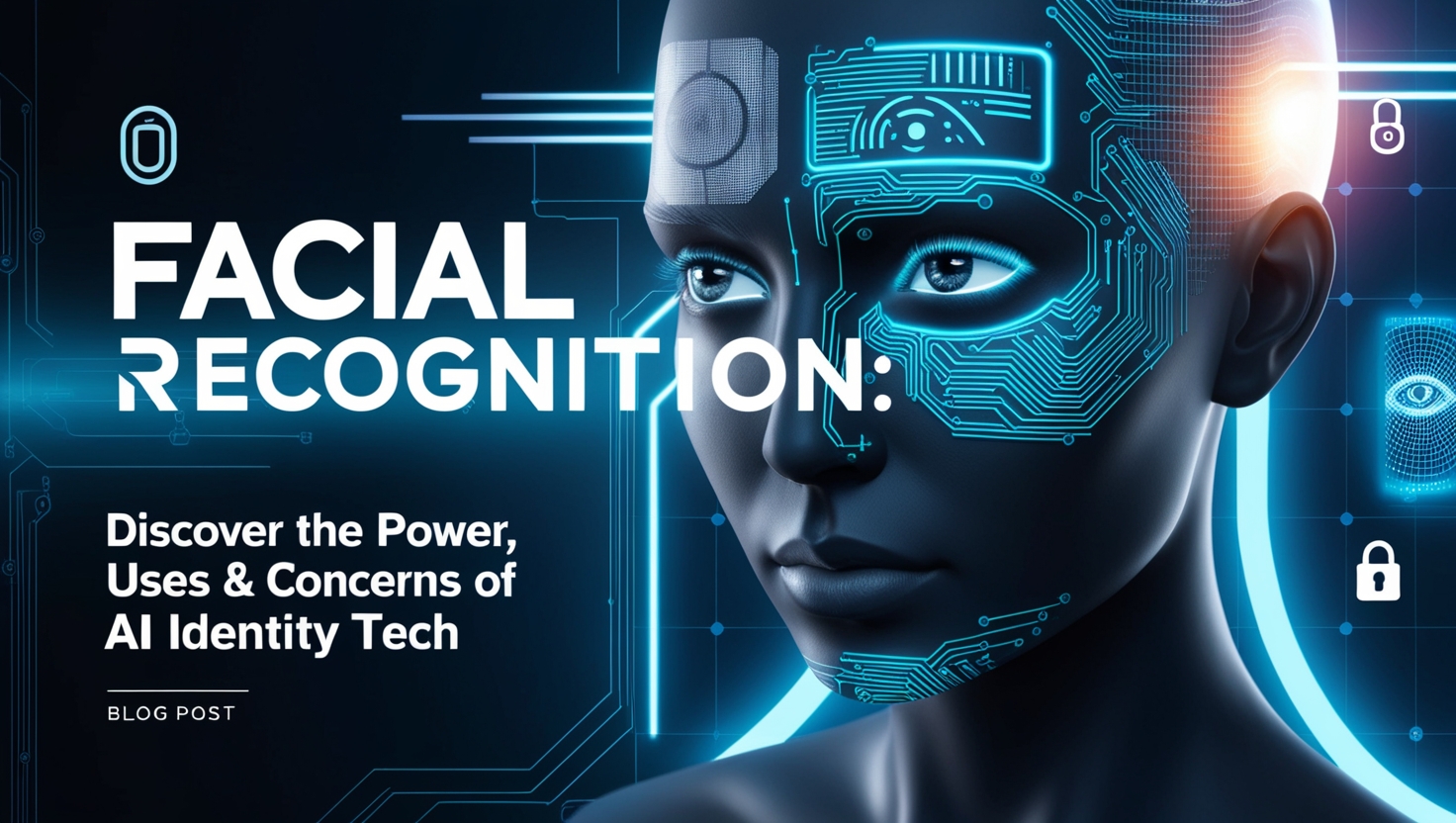1️⃣ 😊 What is Facial Recognition?
Facial recognition is a biometric technology that uses a person’s facial features to identify or verify their identity. This advanced system maps facial traits mathematically and stores the data as a faceprint. Facial recognition systems then compare this faceprint to a database of known faces to find a match. This technology is commonly used in mobile devices, social media, law enforcement, and access control systems.
Facial recognition is not just another tech trend—it is redefining how identity and security are managed globally.
2️⃣ 🧠 How Does Facial Recognition Technology Work?
Facial recognition technology operates in several stages:
- Detection – The system identifies a face in an image or video.
- Analysis – Facial features are measured and mapped, such as the distance between eyes, jawline shape, or nose width.
- Conversion – These measurements are converted into a mathematical representation—a faceprint.
- Matching – The faceprint is compared with a database to find a potential match.
Advanced systems also use AI and machine learning to improve recognition accuracy and handle variables like lighting, angles, and facial expressions.
3️⃣ 📱 Real-World Applications of Facial Recognition
Facial recognition is being used in a wide range of industries, including:
- Mobile Devices: Unlock phones or authorize payments via Face ID.
- Banking: Verify user identity during transactions.
- Retail: Recognize VIP customers or deter shoplifters.
- Healthcare: Patient identification and security.
- Education: Monitor attendance and exam authenticity.
- Airports: Fast-track passenger boarding.
As facial recognition continues to evolve, its applications are expanding into almost every digital and physical space.
4️⃣ 👮 Facial Recognition in Law Enforcement & Surveillance
One of the most controversial uses of facial recognition is in public surveillance and policing. Governments and law enforcement agencies use it to:
- Identify suspects from CCTV footage.
- Track persons of interest.
- Monitor protests or public gatherings.
While facial recognition helps improve security and crime detection, it also raises serious concerns about mass surveillance and potential abuse of power.
5️⃣ 🔒 Facial Recognition in Cybersecurity
In cybersecurity, facial recognition offers a secure and user-friendly form of authentication. Instead of remembering passwords, users can:
- Log in to devices using their face.
- Authorize online payments.
- Secure sensitive data and files.
Facial recognition adds a layer of biometric security, making unauthorized access significantly harder. However, it must be implemented with encryption and anti-spoofing protections to avoid exploitation.
6️⃣ ⚖️ Privacy Concerns & Ethical Dilemmas
Despite its benefits, facial recognition presents significant privacy and ethical concerns:
- Lack of Consent: People are often scanned without knowledge or approval.
- Data Breaches: Faceprint databases are vulnerable to hacking.
- Overreach: Governments may misuse it to monitor citizens or suppress dissent.
There’s growing demand for regulation to ensure facial recognition is used responsibly and ethically, especially in democratic societies.
7️⃣ ⚙️ Bias in Facial Recognition Algorithms
Facial recognition systems are not infallible. Studies have shown that they can have biases based on race, gender, and age. For example:
- Higher error rates for darker skin tones.
- Difficulty in recognizing women or elderly individuals.
This bias stems from imbalanced training data, where models are trained primarily on faces of lighter-skinned males. Addressing this issue is critical to ensuring facial recognition is fair and accurate for everyone.
8️⃣ 🌍 Global Usage: Who’s Using Facial Recognition and How?
Facial recognition is used differently around the world:
- China: Massive public surveillance networks powered by AI.
- USA: Mixed use in law enforcement and commercial sectors; some cities banning it.
- UK: Deployed in high-traffic areas and for crime prevention.
- India: Aadhaar-linked facial recognition for public services and policing.
The global landscape of facial recognition reveals a tension between innovation, security, and individual rights.
9️⃣ 📜 Laws & Regulations Around Facial Recognition
Governments are beginning to address the legal gray areas surrounding facial recognition:
- EU (GDPR): Treats facial data as sensitive and requires clear consent.
- US Cities: San Francisco, Portland, and others have banned its use by public agencies.
- India: Still developing facial recognition policy under its data protection bill.
Legal frameworks vary widely, and many nations lack comprehensive laws to govern the use of facial recognition. Stronger, transparent regulations are needed to ensure accountability.
🔟 🔮 The Future of Facial Recognition
The future of facial recognition looks both exciting and uncertain. Expected developments include:
- Real-time Recognition: Faster and more accurate systems.
- Integration with IoT: Smart home and city systems using face data.
- Deepfake Detection: Combating face spoofing and digital manipulation.
However, unless ethical and privacy issues are resolved, public trust in facial recognition may erode. Balancing innovation with responsibility is key to a sustainable future for this technology.
1️⃣1️⃣ 🆚 Facial Recognition vs Other Biometrics
Facial recognition is just one form of biometric authentication. Here’s how it compares:
| Biometric | Accuracy | Ease of Use | Intrusiveness |
|---|---|---|---|
| Facial Recognition | Moderate–High | Very Easy | Low |
| Fingerprint Scanning | High | Moderate | Medium |
| Iris Scanning | Very High | Low | High |
| Voice Recognition | Moderate | Easy | Low |
While facial recognition is convenient, it may not be as accurate or secure as other forms. A multi-factor approach is often recommended for higher security.
1️⃣2️⃣ 🕵️ How to Avoid Being Tracked by Facial Recognition
If you’re concerned about privacy, here are ways to protect yourself from facial recognition:
- Wear face coverings or hats in public surveillance zones.
- Use anti-surveillance accessories, like adversarial makeup or glasses.
- Avoid uploading clear face images to public platforms.
- Support regulation and advocacy groups pushing for responsible tech use.
Being aware of your digital footprint and staying informed about facial recognition policies is the first step to regaining control of your privacy.

Leave a Reply